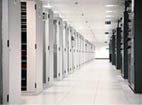Batteries are a common sight at most data centers, but while they typically form the heart of emergency backup architectures, there are growing signs that they could emerge as primary, or at least co-primary, power sources as well.
This trend seems to be part and parcel to the steadily increasing use of hydro, solar and other renewables to power the data center, as well as the rise of low-power, modular infrastructure in cloud-facing, hyperscale facilities.
Microsoft, for one, has been experimenting with a number of battery technologies for a while now, ostensibly to lower operating costs of its Azure cloud. In one project, the company has come up with a new lithium ion design called the Local Energy Storage (LES) unit, according to tech journalist Timothy Prickett Morgan. The system features the normal Panasonic cell that powers microservers and other devices, but rather than hang it off the side of the server, Microsoft dropped it into the switched mode power supply in the Open Cloud Server architecture. In this way, power can go directly to existing circuits without additional wiring and components. This also removes the battery from the path between the power source and the motherboard, ultimately reducing the load on bulk capacitors in backup power systems. The batteries cost only a few dollars when purchased in bulk and are estimated to cut operating costs by about a quarter.
Microsoft is also working with new fuel cell designs, says Gigaom’s Katie Fehrenbacher. The company has turned to a start-up called Redox Power Systems to place cells directly on the server rack, rather than in an external block, as a means to cut down infrastructure cost and complexity. Redox has developed a proprietary nanotechnology process to create a new kind of ceramic that provides higher density and smaller size, effectively enabling a local power source that costs about $1 per watt. Microsoft is due to receive initial cells this fall and, if all goes as planned, will launch a three-year, $5 million trial early next year.
Anyone who has worked with batteries in the data center knows they require a fair amount of maintenance, says Emerson Network Power’s Scott Baer. But as long as standard practices are observed, it should not be overly burdensome. The first step is knowing the life span of your batteries and instituting a program of scheduled replacement. As well, routine visual inspection of not just the batteries but subassemblies, wiring, contacts, breakers – even the air filters – can go a long way toward extending battery life. Continuous monitoring and periodic operational testing to gauge unit transfer, battery discharge and other functions are also recommended.
But no matter how green the energy source, says tech author Patrick Nelson, batteries are most definitely not environmentally friendly. They contain harsh chemicals, some of which are derived from highly disruptive mining or manufacturing processes, and they present a host of disposal issues that will only mount as their numbers creep up. An alternate solution for renewable power, particularly solar, is pumped storage. Originally devised in the late 1960s, it typically involves a dual reservoir system in which water is pumped uphill during the day, when solar energy is cheap and available. At night, the water flows over turbines to the lower lake to provide continuous power. True, it takes more power to pump water uphill than it generates on the return trip, but cost and load differentials between night and day can produce a net gain under the right circumstances. And it is much less toxic than batteries.
Renewable energy will make an important contribution to data power infrastructure, but it will always face the stigma of poor reliability and the need for extensive alternate energy sources. Batteries, pumped storage and other innovations are likely to become integral components of day-to-day operations in addition to fulfilling their roles as backup solutions.
But in all likelihood, the nearby electrical grid will continue to serve as the go-to power solution for many years to come.
Arthur Cole writes about infrastructure for IT Business Edge. Cole has been covering the high-tech media and computing industries for more than 20 years, having served as editor of TV Technology, Video Technology News, Internet News and Multimedia Weekly. His contributions have appeared in Communications Today and Enterprise Networking Planet and as web content for numerous high-tech clients like TwinStrata, Carpathia and NetMagic.




